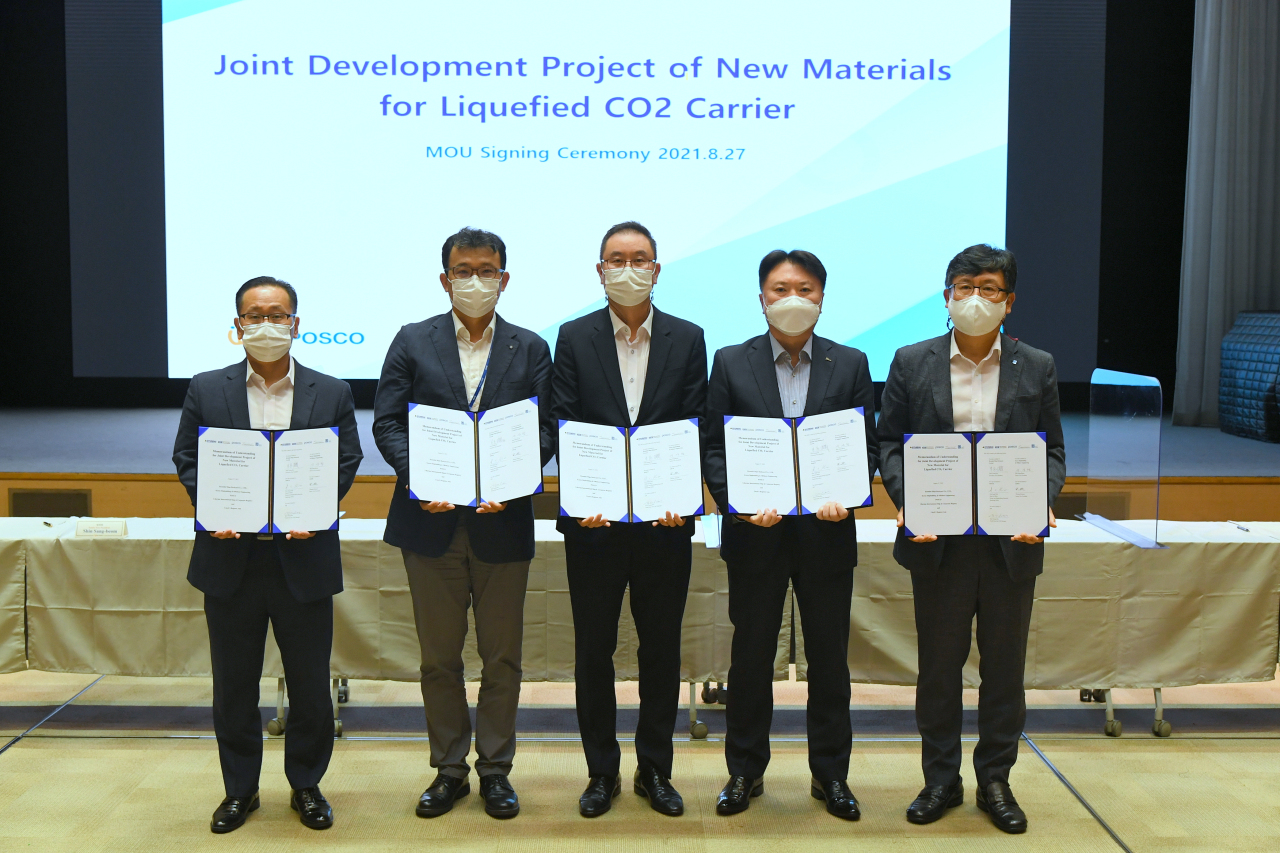Posco to develop LCO2 carrier with Hyundai Mipo Dockyard
By Jo He-rimPublished : Aug. 27, 2021 - 17:34

Posco is partnering with Hyundai Mipo Dockyard to develop liquefied carbon dioxide carrier to gain an upper hand in the carbon capture, utilization and storage market, the steelmaker said Friday.
Posco, the country’s leading steelmaker, said it has agreed to build the liquefied CO2 carrier, as the demand for such ships is expected to grow amid the global movement for carbon neutrality and the transition to hydrogen energy.
Korea Shipbuilding & Offshore Engineering, Lloyd’s Register and Liberian International Ship and Corporate Registry are also participating in the project.
On Friday, the executives of the five companies signed the memorandum of understanding to agree on building the LCO2 carrier that is 20,000 cubic meters in capacity, and developing related technologies, Posco said.
“Posco is cooperating with its clients and other companies to build the world’s first large LCO2 carrier, and gain an upperhand in the global market for carbon neutrality,” a Posco official said.
Under the agreement, Posco will be in charge of producing the steel needed to build the LCO2 carrier, which will be able to withstand low temperatures and high pressure, Posco said. HMD and KSOE will design the ship, and LR and LISCR will certify and register the vessel, so that the envisioned carrier receives the necessary international certification by 2025.
Posco stressed that the importance of technology to capture, store and usee carbon dioxide was growing, citing a report from International Energy Agency in 2020.
According to the report, up to 40 million tons of carbon dioxide is captured annually for permanent storage below the ground, or used for enhanced oil recovery. The report also said the CCUS technology is expected to reduce 15 percent of total emissions by 2070, which would be about 10 billon tons of carbon dioxide, annually.
By Jo He-rim (herim@heraldcorp.com)

















![[KH Explains] Hyundai's full hybrid edge to pay off amid slow transition to pure EVs](http://res.heraldm.com/phpwas/restmb_idxmake.php?idx=652&simg=/content/image/2024/04/18/20240418050645_0.jpg&u=20240418181020)

![[Today’s K-pop] Zico drops snippet of collaboration with Jennie](http://res.heraldm.com/phpwas/restmb_idxmake.php?idx=642&simg=/content/image/2024/04/18/20240418050702_0.jpg&u=)